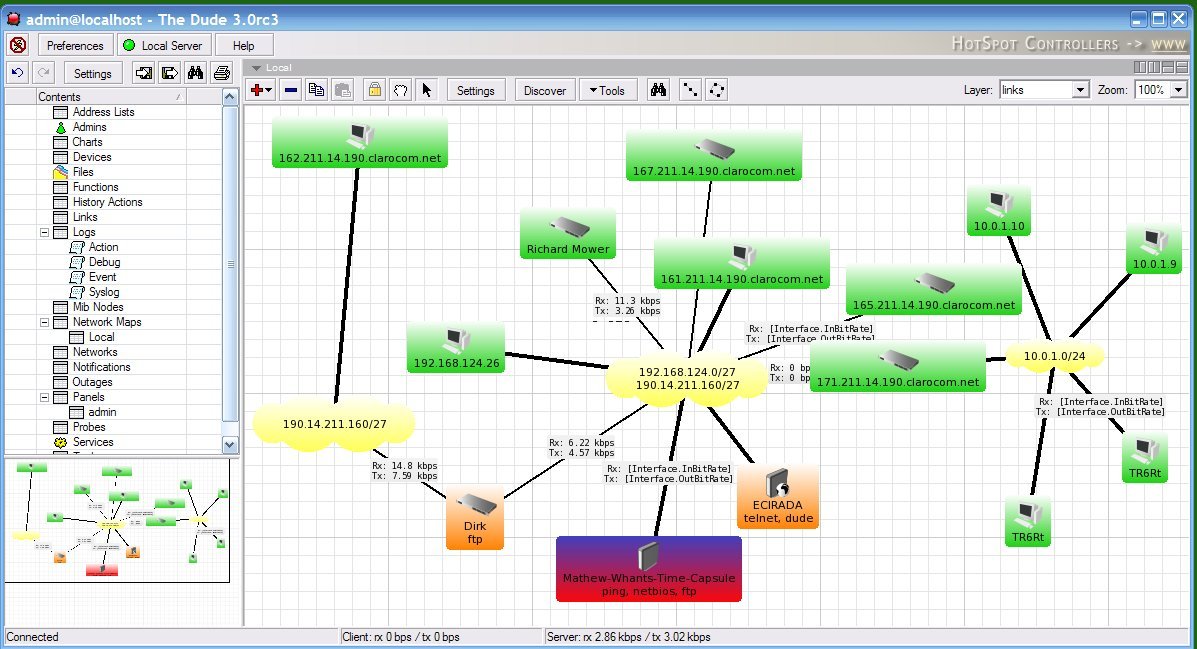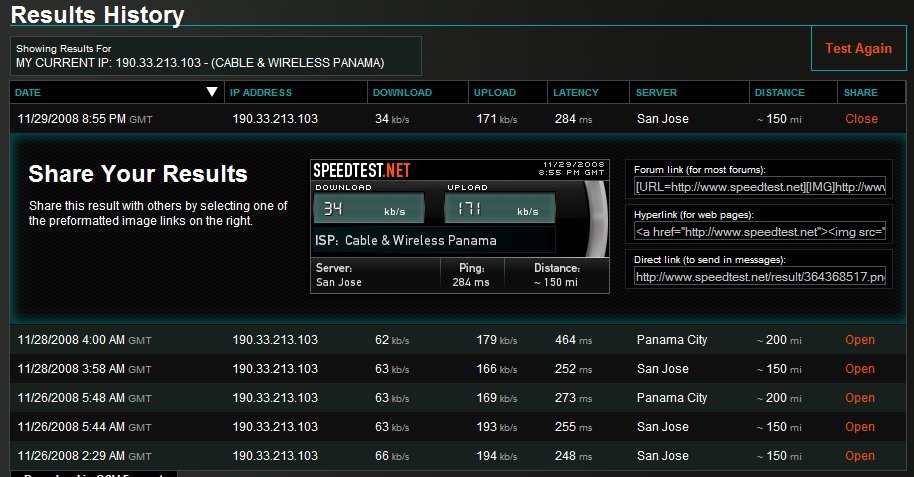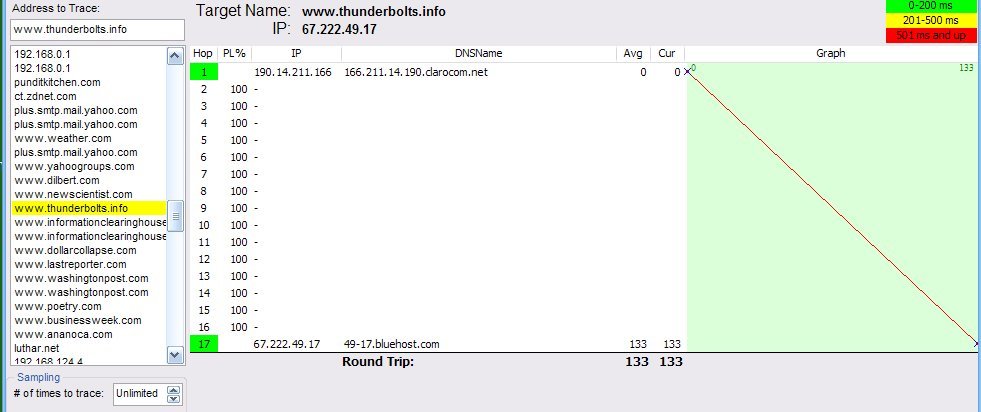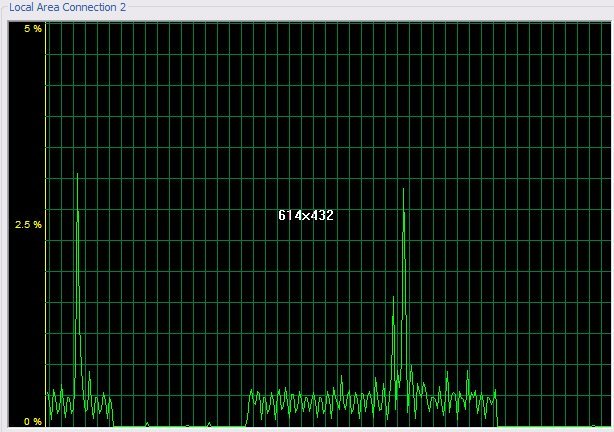The world's worst Internet connection?

What's worst for one might be best for another, so a good idea is to present observations
and then,evaluate them on the basis of your experience. How would you like a connection
that's an hour offline for every minute it's online? And how about a network that disconnects
moderate users in favor of movie downloaders and video conferencing, and in such a way that
the network won't recognize your computer when finally the daily Gigabytes have been sent?
Not very likely on a modern network where an individual connection is 5...50 Mbps fast, but
just try it with one of wireless networks in Panama. The maximal speed one can buy is
a mere 2 Mbps, when measured at sites like speedtest but
most likely is much less
- outside the testing conditions.
How could one know if another user on a network is downloading movies and having video
conferences even if that user says "I don't do that, because it would violate house rules"?
With these simple and free tools: SmartSniff and IPNetInfo, both available at
http://www.nirsoft.net/
In Europe, any computer shop can sell various wireless modems (WiFi) and at a cost under $50.
The speed these devices offer is up to 108 Mbps, IOW excellent value for money. In Panama OTOH
providers sell a modem that'll work on their service only, at the sum of $430. Some of these
devices are fitted with ineffective parabola: because the frequency used is about 5 Ghz
(6 cm wavelength) the dimensions of a hole / spacing in wire grid reflector should be less than
1/10th of a wavelength (6 mm) but the parabolas have a grid with several cm between wires.
One reason why 5 Ghz systems aren't used in Europe is that many people are computer savvy and know
that interference from microwave ovens and industrial heaters isn't much of a problem as a cheap
(or DIY) directional antenna can provide a good enough S/N ratio (Signal-to Noise) easily.
The 2.45 Ghz systems are both cheaper and more reliable than the 5 Ghz versions.
So one might expect 5 Ghz systems in modern countries with funds to improve them and the older
systems in developing countries. Panama is one exception to that rule and the results are
predictable: a transmitter power stage relatively often goes "poof" but preferably when a weekend
starts and nobody can replace the module till Monday (one of Murphy's laws).
The 5 Ghz wireless modems also come in low speed class: with network analyzer, "the dude"
(freely available at http://www.mikrotik.com/ ) it's easy to see their properties. With a
maximal speed of 6 Mbps, there's hardly enough headroom for attenuation when it rains, and
raining heavily it does a lot in Central America! As higher frequencies suffer more from
attenuation by rain than lower frequencies, the choice of 2.45 Ghz would provide a better service.
With the network devices, similar issue: bugs abound. One guest who (unlike me) wasn't familiar
with computers was also told by the provider that his system was faulty so he needed to buy a
special interface. He didn't believe that, took his laptop to David and there, it worked perfectly.
That man has a story now, and it won't be pretty.
The landlord wasn't quite happy with the situation either and ordered DSL, speed 1 Mbps from
Cable and Wireless, Panama. When it arrived, it worked very slowly, and after "repair" it still
worked very slowly - don't look at the pic with a full mouth!

Of course there will be more promises of repair and improvement but nothing that will improve
the speed to the contracted value. A device that would work is a loop-extender, but that solution
is likely to be a solid no-no: wireless providers are willing to pay to keep loopextenders away!
So one might wonder if the state of networking can be made visible as well. A simple indication
is the "ping" function, in popular terms a kind of "hello there?" with "Hi!" Q and A, but with
added data, like the time it took a packet to arrive at a node. At least Cable and Wireless gives
that data and it might be clear that it uses the US backbone, responsible for most of the delay.
Use the ping proggy yourself, freely avaible at:http://www.pingplotter.com/


With wireless providers who don't like clients to see why connecting can take so long, the issue is
to display only begin and end so the connection seems OK whereas it's rather bad (slow). There are
programs, using ping data to enable (calculate) a much more effective (faster) data transfer which
would greatly benefit a less developed network infrastructure. See
http://www.cfos.de/index2_e.htm
Not so for wireless providers who want to sell their fastest connection.

There's more in the bag of tricks though. Because messenger programs like Yahoo don't allow "call from
computer" type of connections in several countries (including Panama), Skype is immensely popular.
So a provider can take a simple measure when fiddling with the network without upsetting customers:
Skype's "connected" icon stays on but only because the network isn't offline long enough to lose
"ping" contact. If Skype would make ping interval a user-controllable option, a poor status of the
network would be visible also to customers, now fooled in the belief that their application is
online but is faulty (doesn't connect!).

So what could be expected when embarrassed by a report like this? Right, insertion of devices that
disable network analysis

Just in case someone wonders "where's the link with nonduality?"
It's this: "Nothing really works" (pun intended).
Home
/\
Introduction
/\
Selected Topics
/\
On Kundalini
/\
Poetry
/\
Pictures






